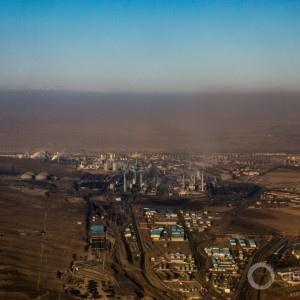Federal Water Tap, September 16: National Water Census Update
Countdown
The first products from the National Water Census will be estimates of water flows in rivers without gauges and estimates of evapotranspiration, according to a congressional briefing led by the U.S. Geological Survey. Required in the SECURE Water Act of 2009, the census will be a comprehensive survey of national water use and availability, an assessment last completed 35 years ago. Slides from the briefing will be posted here.
EPA Fracking Study Update
In June the U.S. Environmental Protection Agency announced that its study of the effects of hydraulic fracturing on drinking water would be delayed until 2016. One of the reasons is the time required for the case studies. During a webinar Thursday, Richard Wilkin of the EPA’s Office of Research and Development said that the prospective case studies, which track the well-drilling cycle, would take at least two years to complete: one year for baseline testing before drilling and one year for post-frack testing, then quality control and peer review. The EPA is now selecting sites for the prospective studies, a process requiring cooperation with energy companies and landowners.
House Climate Hearing
The House Committee on Energy and Commerce will hold a hearing Wednesday morning to discuss President Barack Obama’s climate change policies. Department of Energy Secretary Ernest Moniz and Environmental Protection Agency Administrator Gina McCarthy will testify. The hearing will be webcast on the committee’s Web site.
House Water Bill
Following the Senate’s lead, the House introduced its version of the legislation that funds levees and ports. The Water Resources Reform and Development Act is lean. It deauthorizes $US 12 billion in projects approved before 2007 that have not begun construction. To accelerate new projects, Army Corps of Engineers feasibility studies would be capped at three years and corps permitting and review processes would be consolidated.
The Senate version included a low-interest financing program for water infrastructure, called WIFIA. The House bill does not.
Senate Energy and Water Efficiency Bill
Senators proposed a number of amendments to expand or neuter federal programs for water and energy efficiency.
Tom Udall, a New Mexico Democrat, offered three amendments: to establish pilot projects demonstrating energy-efficient water systems; to expand the federal WaterSense efficiency program; and to create a national renewable energy standard of 25 percent by 2025.
Rand Paul, a Kentucky Republican, went the other direction. He introduced an amendment that would repeal federal plumbing standards.
The text of all amendments to the Energy Savings and Industrial Competitiveness Act can be found here.
Pakistan
U.S. Ambassador Richard Olson spoke at the inauguration of the Gomal Zam Dam, built with U.S. assistance in Pakistan’s mountainous and isolated Federally Administered Tribal Areas which border Afghanistan.
“In partnership with Pakistan, we are working to boost power generation capacity and to ensure long-term self-sufficiency of the power sector,” the ambassador said on Thursday.
The U.S. provided $US 97 million for the 17.4 megawatt project through the Kerry-Lugar-Berman Act, a massive non-military aid package for Pakistan passed in 2009.
Los Angeles River
The Army Corps of Engineers released a draft environmental review for a project to restore 17.7 kilometers (11 miles) of the Los Angeles River in the heart of the city. The preferred plan, out of four options, would cost $US 442 million and includes daylighting streams, widening the channel bottom, restoring riverbank vegetation, and establishing wetlands. Comments are being accepted through November 5 via comments.lariverstudy@usace.army.mil.
Colorado River
The Bureau of Reclamation posted comments received on the Colorado River Basin supply and demand study, released last December. Most of the comments deal with river flows for national parks and for whitewater sports.
“Drink Up”
That’s the tag line for a new initiative to promote drinking water, from First Lady Michelle Obama and the Partnership for a Healthier America. Bottled water companies, municipal water utilities, and a host of partners in media and advertising will use the brand on their products.
Forensic Science
And lastly, an item from the CSI realm. Researchers from the U.S. Geological Survey analyzed hydrogen and oxygen isotopes in the tap water from 349 sites in the U.S, mostly from faucets in USGS offices. Once ingested, the isotopes in the water persist in animal tissues – hair and nails, for example – acting as a signpost of consumption. The isotope database will help forensic scientists track down where a person, or a body, has been – the “geolocation of biological tissue” as the report puts it.
Federal Water Tap is a weekly digest spotting trends in U.S. government water policy. To get more water news, follow Circle of Blue on Twitter and sign up for our newsletter.
Brett writes about agriculture, energy, infrastructure, and the politics and economics of water in the United States. He also writes the Federal Water Tap, Circle of Blue’s weekly digest of U.S. government water news. He is the winner of two Society of Environmental Journalists reporting awards, one of the top honors in American environmental journalism: first place for explanatory reporting for a series on septic system pollution in the United States(2016) and third place for beat reporting in a small market (2014). He received the Sierra Club’s Distinguished Service Award in 2018. Brett lives in Seattle, where he hikes the mountains and bakes pies. Contact Brett Walton





Leave a Reply
Want to join the discussion?Feel free to contribute!